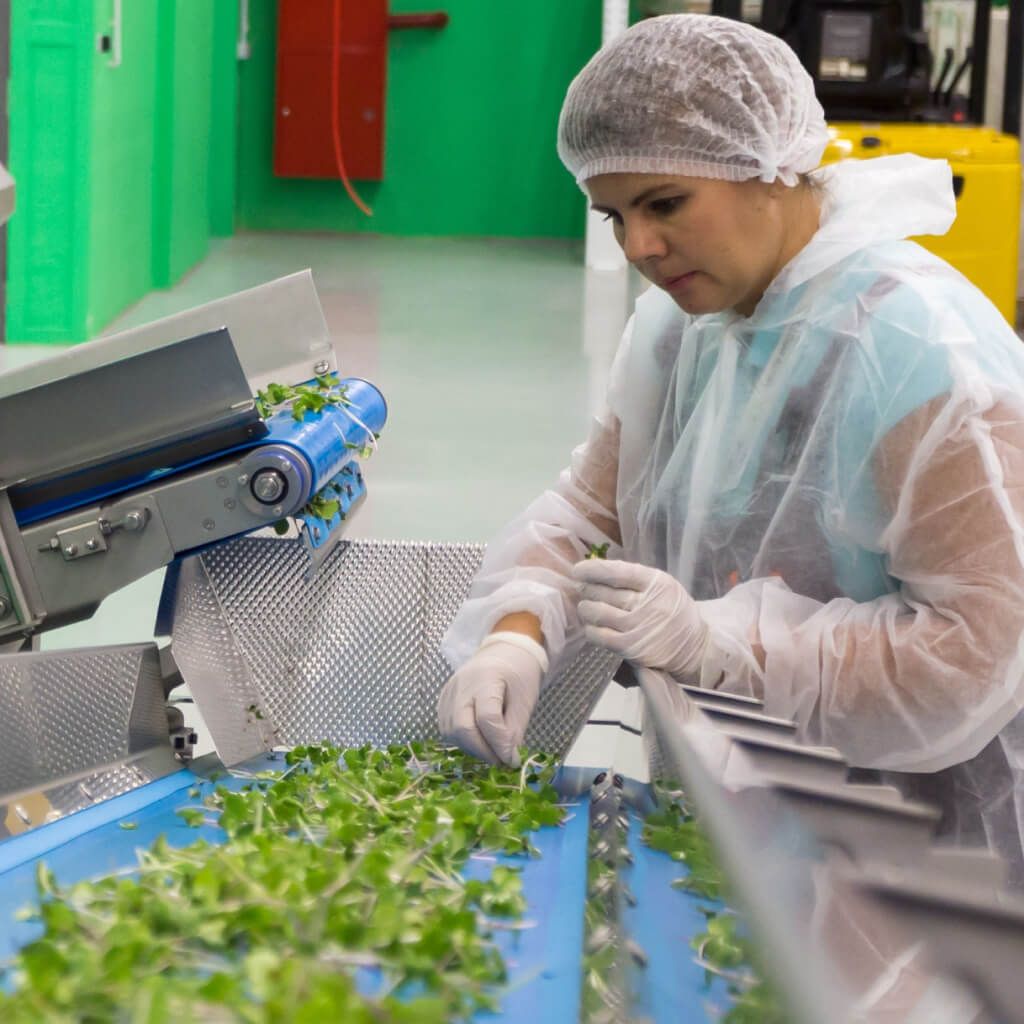
Carbon Footprint Reduction – 10 ideas for food companies to reduce emissions

What are effective ways to reduce a carbon footprint of food products and company’s emissions? We put together a list that helps food manufacturers get started in their climate actions!
The journey of food, from field to table, involves numerous stakeholders, including farmers, producers, logistics operators, food manufacturers, wholesalers, stores, consumers, and waste handlers.
Hence, it is crucial to implement climate-friendly measures across the entire food chain, not just in processing and manufacturing. While operators typically focus on their own emissions (Scope 1 & 2), it is essential to consider the emissions throughout the value chain for a comprehensive understanding. Conducting product-specific life cycle assessments that encompass all emissions in the supply chain provides valuable insights.
10 ideas to lower a company’s carbon footprint
Determining responsibility for reducing the carbon footprint in food production is challenging due to the complexity of long supply chains. Agriculture often receives criticism as the largest emitter statistically; however, it is also capable of carbon sequestration.
Consequently, collective efforts are required from all stakeholders in the food supply chain to combat climate change. This article presents ten concrete tips to help companies and food manufacturers reduce their carbon footprint and contribute to a sustainable future.
Here’s 10 ideas on how food companies can work across their value chains to reduce emissions and lower their carbon footprints.
Emission Reductions in Agriculture:
- Reduce emissions resulting from organic soil break-up in crop production for food and feed
Impressive progress have been made in agriculture regarding climate action. Emphasizing regenerative cultivation principles and cultivating on mineral soil can even facilitate carbon sequestration.
Managing soil moisture through organic soil control drainage minimizes erosion risk, preserves soil structure, and reduces breakdown and nutrient leaching. Cultivating perennial plants in peat fields also curbs emissions from decomposition while promoting soil health.
Subscription arrangements can be employed to reduce the need for clearing new peat fields and encourage the abandonment of old ones.
For more information on climate-wise farming, visit ProAgria’s website.
- Use organic and low-emissions fertilizers in farming
Fertilizers play a significant role in agricultural production, but low-emission alternatives are available in the market. Utilizing organic fertilizers not only helps reduce emissions but also provides a sensible way to utilize agricultural waste while transitioning away from fossil inputs. Regenerative farming methods, such as minimal chemical use and organic fertilizers, enhance soil fertility and reduce emissions from soil decomposition.
Collaborating with animal farms enables plant farms to transition away from chemical fertilizers, as animal farms naturally produce manure. Long-term measures and partnerships between food companies and contract farmers can promote sustainable agriculture and encourage the adoption of environmentally friendly farming practices.

The results shows you clearly what the emissions consist of and what could be the areas that should be paid attention to if you want to reduce emissions in the future. On the basis of the calculator, you can take the activities in the right direction.
Berry farm Marjakatrilli’s entrepreneur Kati-Maria Snäkin
Climate Friendliness in Production Processes:
- Minimize waste streams and maximize product output
Reducing waste streams and optimizing product output are crucial components of emission reduction measures. By planning recipes that make efficient use of raw materials, such as utilizing an orange’s juice and peel separately in bakery products, waste can be minimized. Innovative solutions can further reduce the environmental impact of main products.
Exemplary practices can be found in industries like sugar production, where by-products like betaine are used in Lumene’s skincare products, or in distilleries and breweries that repurpose side streams as animal feed.
- Switch to clean energy such as wind, solar and hydro
When making investments in production facilities, it is important to choose energy sources wisely. Transitioning to clean energy, such as wind, solar, or hydroelectric power, is a straightforward way to reduce production emissions.
It was nice to notice that switching to solar energy had a big impact on environmental friendliness.
Heidi Kumpulainen, Pakkasmarja
Investments in clean energy production can quickly pay for themselves and may even generate surplus energy.
Nestlé, for example, built a biogas plant that converts organic waste from fondue and sauce production into biogas, thereby replacing fossil fuel use at the Juuka food factory. The by-products of the biogas plant can also be used as organic fertilizer in agriculture.

Smaller Carbon Footprint in Packaging:
- Avoid over-packing
While packaging typically constitutes a small portion of a food product’s carbon footprint, it presents an easily addressable area for emission reduction. Oversized packaging, often filled with unnecessary air, not only negatively impacts the environment but also affects waste fees and consumers’ willingness to repurchase the product.
Encouraging compact packaging and choosing high-quality materials can minimize material consumption and reduce waste fees. However, it is crucial to consider the food’s shelf life to prevent wastage resulting from poor packaging choices.
- Use light-weight packaging from renewable and reusable materials
As virgin plastic faces increasing scrutiny, transitioning to renewable materials becomes imperative. The negotiations in Paris during the spring 2023 on an international plastic agreement, will be followed by tightening legistlation in EU.
The reusability of packaging further reduces the carbon footprint of products. Consider utilizing packaging made from a single material to facilitate recycling for consumers. Reusability is becoming a critical factor in business, as opting for lighter recycled material might be initially costlier but can become more affordable due to regulations, incentives, and waste fees.
Nespresso decision to use endlessly reusable aluminum for coffee capsules showcases a commitment to a plastic-free, high-quality, and recognizable brand.
Climate Efficiency in Transport:

- Source raw materials for food products from as close as possible
Purchasing raw materials from nearby sources offers several benefits, including reduced transport costs, unaltered quality and hygiene of the raw materials, a positive brand image (e.g., locally produced, domestic), reduced need for preservatives, and decreased consumption of fossil fuels. Sourcing locally supports sustainable practices and helps mitigate climate impact.
- Optimize delivery routes to minimize travel distances
Optimizing delivery routes not only saves time and money but also contributes to emissions reduction. Chaining deliveries to different destinations, thus avoiding unnecessary back-and-forth trips, helps reduce driving distances and emissions.
Additionally, optimizing delivery schedules to avoid rush hour traffic can further reduce fuel consumption. Economical driving practices offer significant benefits, especially for larger vehicle fleets, resulting in savings of around 5–15%.
- Use low emission and fuel-efficient transportation such as rail and shipping for raw material sourcing
Transitioning to biofuels and electric vehicles contributes to reducing the climate impact of transportation. When long routes are involved, freight transport providers should be encouraged to report emissions and prioritize carbon footprint reduction as part of their responsibility strategy.
- Use appropriate delivery vehicles to maximize fill ratios
Optimizing fill ratios in delivery vehicles prevents wasteful resource use and minimizes the climate impact. Choosing the most suitable mode of transport based on the type and quantity of goods can significantly reduce emissions. Sometimes, alternatives like scooters can be more efficient than vans. Striving for full loads and seeking partnerships with aligned transportation needs can further enhance emission reduction efforts.
By implementing these measures, companies and food manufacturers can actively contribute to reducing the carbon footprint of their products and support sustainability initiatives.
Stay tuned and subscribe to our messages about the climate, food industry and food supply chain



